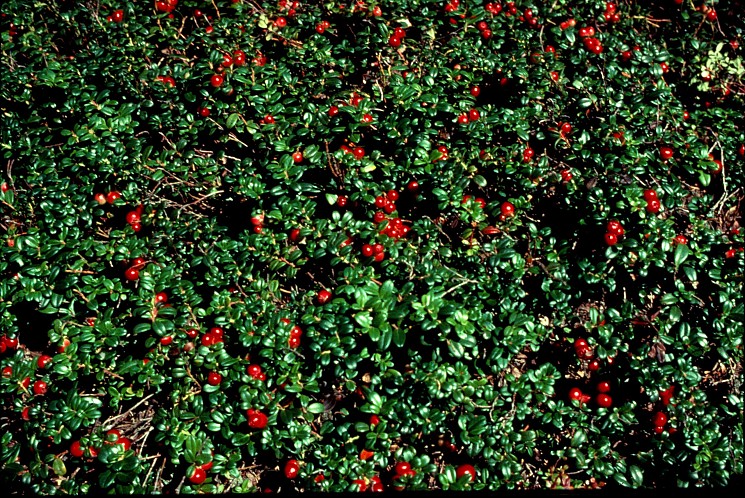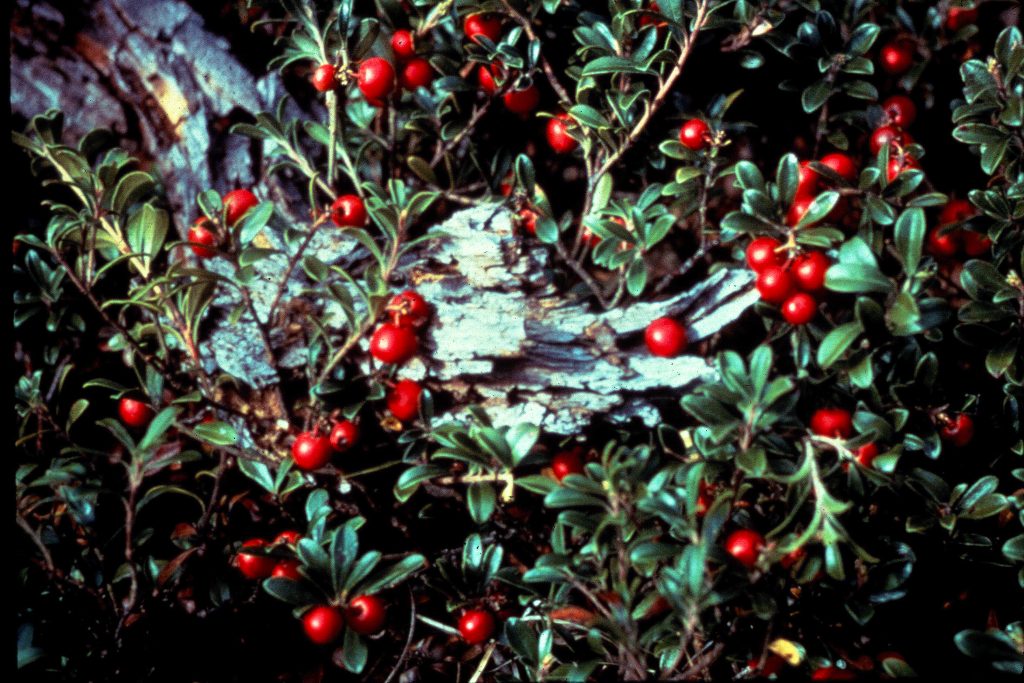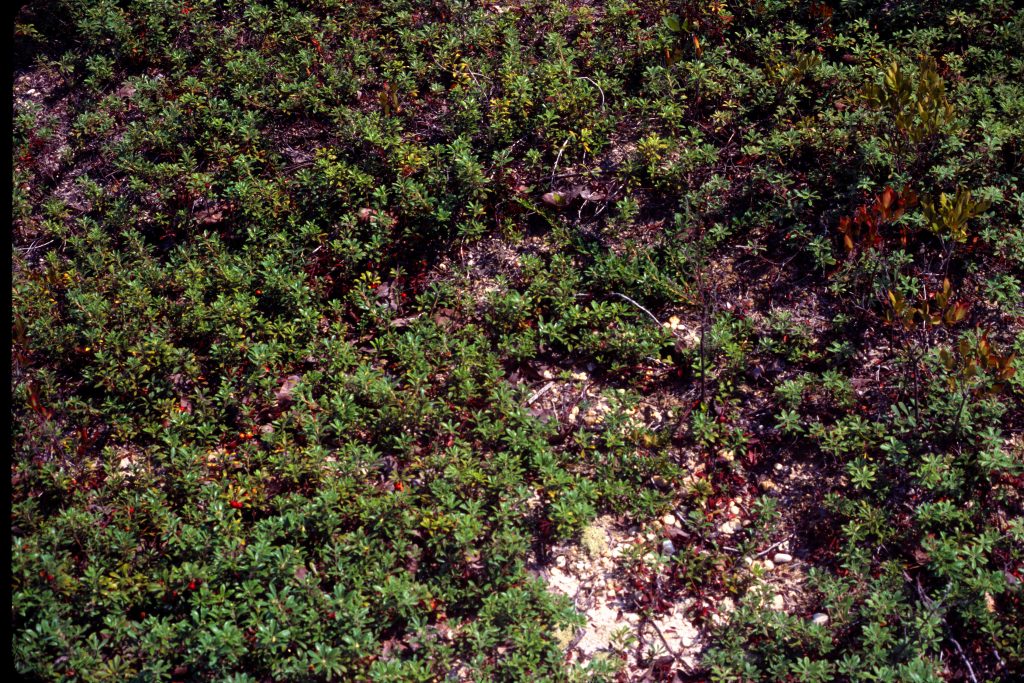Bearberry

There’s a bear in the Truro woods.
People have seen it – three or four, …
-Mary Oliver
An opportunity to use images inspired from Oliver’s words are welcomed. “The Truro Bear” alluded to in her same titled poem is also accompanied therein by blueberry, blackberry and cranberry. We vicariously suggest the addition of our native bearberry, Arctostaphylos uva-ursi, commonly found growing in Truro and many other towns of Cape Cod.
Bearberry, Arctostaphylos uva-ursi is an evergreen, prostrate growing shrub which in autumn produces bright red fruits, often persisting into early winter that are indeed eaten by bears, as well as by deer, other smaller mammals, and birds. The etymology of the genus name is both Greek and Latin. In Greek, arctos means bear and staphyle is a bunch of grapes. In Latin, uva and ursi mean grape and bear respectively.

Arctostaphylos is a genus with 60 species of shrubs and small trees native to North America, mostly evergreen but some are deciduous.Within this genus bearberry, Arctostaphylos uva-ursi is one of several species of low-growing sub-shrubs, only reaching 6-12-inches tall, usually spreading wider than it is tall, a fine example of survival of the shortest. Its alternate, evergreen leaves are ½ – 1 ¼-inch long, leathery, short-stalked, with entire (smooth) margins and rounded at the tip. These leaves often turn a bronze color in the winter before returning to green in the spring. In May, ¼-inch, white, urn-shaped, drooping flowers if fertilized will produce ¼ -½-inch fruits (drupes) in the summer, first as green, later ripening to brilliant red in the fall.The native habitat of bearberry, Arctostaphylos uva-ursi includes subarctic Newfoundland to Alaska, (as well as circumboreal northern latitudes of Europe and Asia) south to Virginia, Illinois and South Dakota, the widest natural distribution within the genus. The cold hardiness range for this species is USDA Zone 2 to 6. Zone 2’s average annual winter minimum temperatures are between -50 degrees and -40 degrees.
Previously when discussing Oregon Grape, we mentioned Lewis and Clark’s 1804-06 Corps of Discovery.A bearberry, Arctostaphylos uva-ursi, was also part of the botanical collections returned from this historic exploration. The Academy of Natural Sciences in Philadelphia has an original Lewis and Clark herbarium mounted sheet of bearberry. As with other plants bearberry has had a long history of many other common names. Lewis was introduced to this plant as sacacommis, a Chippewa word. In January 1806, Meriwether Lewis (1774-1809) wrote his description from encounters with this plant, “…it is generally found in the open piney woodland as on the Western side of the Rocky Mountains … natives…who can procure this berry invariably use it. To me it is a very tasteless and insipid fruit…The leaves retain their verdure most perfectly through the winter, even in the most rigid climate …The fruit ripens in September and remains on the bushes all winter. The frost appears to take no effect on it. These berries are sometimes gathered and hung in their lodges in bags where they dry without further trouble, …”

From Meriwether Lewis we conclude by returning to the close of Mary Oliver’s featured poem,
“…when has happiness ever
required much evidence to begin
its leaf-green breathing?”
On a future visit to mount Auburn look for our bearberry, Arctostaphylos uva-ursi in Consecration Dell, which along with numerous other types of plants in our landscape may enhance your leaf-green breathing.
Leave a Reply